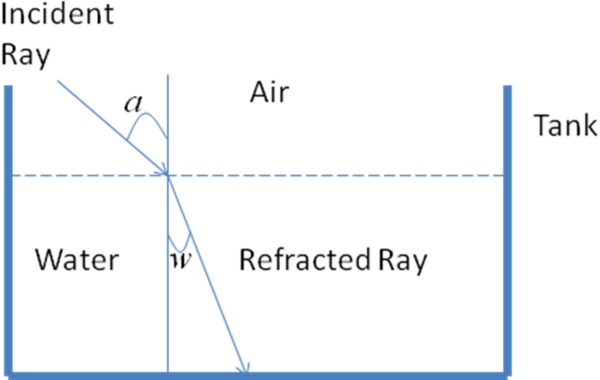| << Chapter < Page | Chapter >> Page > |
Comment: Triangulation is a process that can be applied to solve problems in a number of areas of engineering including surveying, construction management, radar, sonar, lidar, etc.
Refraction is a physical phenomenon that occurs when light passes from one transparent medium (such as air) through another (for example, glass.) It is known that light travels at different speeds through different transparent media. The index of refraction of a medium is a measure of how much the speed of light is reduced as it passes through the medium. In the case of glass, the index of refraction is approximately 1.5. This means that light travels as a speed of times the speed of light in a vacuum.
Two common properties of transparent materials can be attributed to the index of refraction. One is that light rays change direction as they pass from one medium through another. Secondly, light is partially reflected when it passes from one medium to another medium with a different index of refraction. We will focus on the first of these properties in this reading.
In optics, which is a field of physics, you will learn about Snell's law, which is also known as Descartes' law after the scientist, Rene Descartes . Snell’s law takes the form of an equation that states the relationship between the angle of incidence and the angle of refraction for light passing from one medium to another. Stated mathematically, Snell’s law is
It follows that
where are the Index of Refraction of medium 1 and medium 2 respectively.
Consider a situation where light rays pass are shined from air through a tank of water. This situation is illustrated below.

The Index of refraction for air is 1.0003 and that of water is 1.3000. Let us assume that the angle that light enters the water is 21 0 40’, what is the angle of refraction, w ?
From Snell’s law, we know
Substituting in the numerical values for I A , I W and a yield
We now make use of the inverse sine function
This leads to the result
We conclude that the refracted ray will travel through the water at an angle of refraction of 16 0 30’ .


Notification Switch
Would you like to follow the 'Math 1508 (laboratory) engineering applications of precalculus' conversation and receive update notifications?